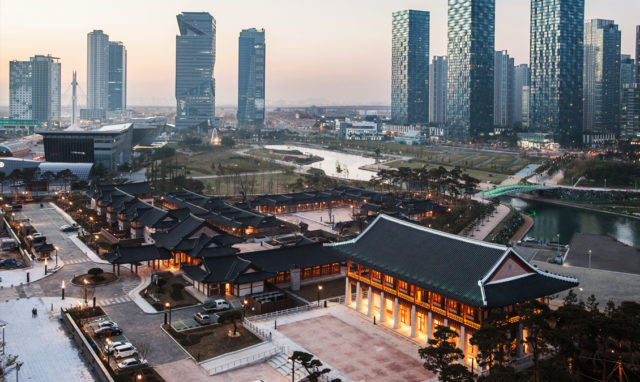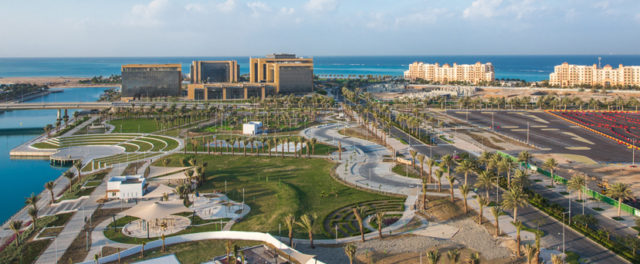Where do Master-planned Cities Fit in the New Urban Agenda?
October 14, 2016 — Blog
The creation of new master-planned cities is not a new development strategy – from Alexandria, to Brasilia, to Tianjin Eco-City, they have been prioritized by ambitious groups throughout history. New cities are proving grounds for experimenting with new technologies, planning approaches and economic strategies, and represent the desire to design new ways of living.
A wave of new master-planned cities has emerged in recent decades in response to rapid urbanization and, subsequently, massive needs for infrastructure and housing. These major developments are also used in an attempt to spark economic growth. Since the mid-1990s, over 100 new city projects have been designed or are under construction. The vast majority of these projects are located in the Global South – clustered in China, Southeast Asia, India, the Middle East,across Africa and most recently, Latin America.

These ambitious new city projects represent investments worth hundreds of billions of dollars, use large swathes of land, and require unprecedented infrastructure development. In many cases they aim for a fresh start to create new economic clusters and centers of development, an integral part of the broader economic goals for boosting a nation’s place in the high-tech and knowledge economy.
At this critical juncture in global urbanization, we are at the stage where we must draw tangible lessons from the experiences of many new cities, both past and present, as well as from best practices and failed urban experiments.
Foundations for Better Urban Development
Despite the proliferation of cities being built from the ground up, with vast amount of public and private resources being spent on them, there has been limited critical investigation into the successes, failures, and possibilities of new cities to engender a meaningful and inclusive role in this urban age. The upcoming Habitat III conference is an important opportunity to respond to this phenomenon within the greater ‘New Urban Agenda’ sphere, and to advocate for more equitable, inclusive, and sustainable development in new cities.
Many of these projects are in full swing, laying down infrastructure and working to attract residents and businesses daily – King Abdullah Economic City (KAEC), in Saudi Arabia is now in its tenth year of development and operated a budget of over $100 Billion. The size of investment and the large scale and ambition of these projects is remarkable, and has become a very real component of the urban future for many parts of the world. In Asia and sub-Saharan Africa, hundreds of millions of people are predicted to move to urban centers in the coming 20 years, adding urgency to the need to refine new models of urbanization and making effective use of investments at this scale. It is essential for the broader urban development discussion to reflect on the new cities phenomenon as these mega-projects continue to develop, and take a critical look at their processes and outcomes.

Constructing new cities from a tabula rasa presents unprecedented opportunities to learn from past mistakes and to avoid the many environmental, social, and structural problems that increasingly plague cities. Builders of new cities have the ability to create new urban environments, to ‘hardwire’ cities with features that promote walkability and social inclusion, and reduce carbon emissions and the environmental impact of urban centers.
Greenfield Cities and the New Urban Agenda
The New Urban Agenda, the central focus of next week’s momentous Habitat III conference, will outline the path towards more sustainable, resilient, and inclusive urban development for decades to come. These principles will be crucial to addressing the most pressing issues we face today. If new cities are to contribute to these goals and empower their residents, understanding this contemporary wave of mega-developments and connecting research to policy is necessary in the upcoming conversation in Quito.
The current wave of new cities is being shaped by global forces and actors in a way that contrasts with similar projects from previous decades. While post-WWII new cities were designed and financed by people and organizations in the Global North, current new cities involve consultants, designers, and project leaders from Singapore, South Korea, Russia, Gulf States, among others. This introduces new concepts, approaches, and power dynamics that challenge traditional flows of ideas and expertise.
As the private sector increases its role in the planning and implementation of large-scale urban development, new cities reflect the latest urban development trends and potentially offer critical learning opportunities. Understanding the main drivers of new city projects and the forces affecting their outcomes can help shed light on the prospects as well as limitations for private sector roles in directly meeting needs of an urbanizing population. Within the New Urban Agenda, attention should be payed to influencing both public and private-led urbanization alike towards making a positive impact with the large scale infrastructure, housing, and economic activity they represent.
It is premature to fully assess the rising number of new cities, as many are still in their early stages. Some count only several thousand pioneering residents, while others are in the planning stages and have not yet broken ground. The session at UN Habitat III on new cities will provide a preliminary assessment of the extent to which new cities are implementing the New Urban Agenda and how we can affect positive outcomes and monitor their progress in the future.
